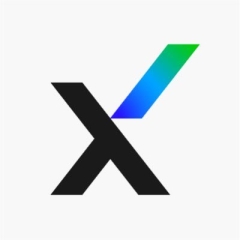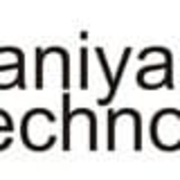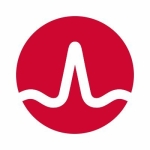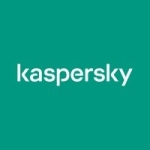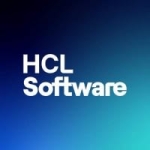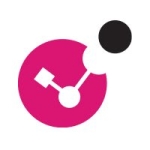What is our primary use case?
We currently have around 50 servers. We aren't really a big company but we have 50 servers which we manage. We use McAfee for the web filtering portion of it. For example, if a user is doing a search on Google, there's a risk-rating web content filter built into McAfee. This alerts us if there are any threats present.
We have licensed McAfee ENS on a per-server basis. As of now, from memory, I think we have 56 endpoints running McAfee — 56 servers in total.
What is most valuable?
From the McAfee side, I really like the ePolicy Orchestrator software that allows us to manage all of our endpoints. You can create the deployment policies and whenever there is a new update — a new version of the ENS Agent, or threat protection — we could test it out in the evaluation branch, and even test it on some of our servers.
It's quite easy to manage. Quite intuitive. I would say the dashboard of ePolicy Orchestrator software is quite intuitive and quite easy to understand and manage.
For how long have I used the solution?
I have been using this solution for 15 to 20 years.
What do I think about the stability of the solution?
We have had some issues from the performance side of things, especially when we were deploying new types of software. Sometimes the consumption of resources from McAfee was a bit high. Afterward, these problems were resolved gradually in future versions of McAfee. From what I've read from the release notes, in regard to the handling of memory, McAfee has been doing a better job, which wasn't really the case in the early years.
What do I think about the scalability of the solution?
It's easily scalable. If I need to deploy the Agent over 800 endpoints, I just have to script it and run a group policy to deploy it to all of our computers on the network — it's quite easy.
How are customer service and technical support?
For day-to-day management and ongoing queries, if ever I didn't have the solution to queries, I would just raise the case to the case management section of the McAfee website. Then the McAfee support team would help me out.
I was definitely satisfied with the support team. I really can't complain. They always sent me the correct knowledge-based article and they provided really insightful information to help me find a resolution to the issue.
Which solution did I use previously and why did I switch?
At the previous company that I worked for, we used Symantec Endpoint Protection. Now, we are working with CylancePROTECT and OPTICS.
The main reason that we moved from McAfee to Cylance is that McAfee is still a signature-based product. We moved to Cylance, a signatureless-based product, where everything is updated. What I was doing, from an ENS product point stance, I had set reminders to myself and my team to update the Agent and look into the software repository to see if there were any updates every month.
Indeed, every month we had software updates and fixing restrictions. It wasn't good but I now have less of a hard time looking into this from a Cylance perspective as the Cylance library doesn't push one-minute software updates per year. I would say at most, two or three software updates a year, which is very, very small from a software update perspective in comparison to McAfee.
They're both good products. I'm not saying McAfee is a bad product. It's a very, very good product. It's mainly for these reasons that we moved to Cylance.
The ePolicy Orchestrator console is good, but from my side, I would say Cylance has a better artificial intelligence module — the OPTICS module which I would say is the way to go. I haven't really seen the trend in terms of what other companies other than McAfee or Symantec are doing, but Cylance is doing a really good job with this artificial intelligence module. It's great when it comes to notifying the team when it detects something malicious.
With McAfee, if there is a zero-day vulnerability, you have to download the patch for it from the McAfee website, then apply it to your endpoint. With Cylance, it's not like that. Each agent does it by itself — it's like a self-healing application. This is something that signature-based antivirus solutions like McAfee and Symantec didn't have until now, unfortunately. That's why we moved towards Cylance.
How was the initial setup?
It's quite easy to install agents. Deployment and product updates are quite easy, as well. It goes without saying that it comes with some, I would say, low-level training and upscaling but these are easily retrievable from the knowledge base of McAfee.
We manually downloaded their AMCore versions to keep all our endpoints up to date. This way, whenever we troubleshoot the root cause of an issue, we still keep our endpoints as updated as possible and keep our environment safe.
When we installed the Agent — let's say I am building a new VM and new server. When you run the frame package, it's really intense. I would say it takes roughly two minutes to install, then afterward, to install the ENS modules, like the threat protection and web filtering packages, you've got to go through the ePolicy Orchestrator management console. I would say, all in all, it takes roughly 10 minutes.
To get it up to date, to download everything, all the packages, the software updates, and all of the AMCore DAT files as well as the virus definitions, it's quite easy. It doesn't take much time at all.
What about the implementation team?
For deployment, I worked with one external consultant.
Initially, when I came to the company, I didn't really have a background or any experience managing McAfee. I came from more of a Symantec background but I gained some knowledge from one of our external consultants who really had a deep understanding of McAfee products and their deployment. We had some training sessions and then I could manage the McAfee forum on my own. After a week's worth of training, I could manage McAfee on my own.
What's my experience with pricing, setup cost, and licensing?
We had McAfee on a year renewal. We purchased it initially and then we renewed it on a yearly basis. I think the only reason we are renewing the license is for support reasons.
What other advice do I have?
I would definitely recommend this solution to others. McAfee is a good product. I worked with Symantec, but personally, I think McAfee is better.
However, in my opinion, now having worked with CylancePROTECT and OPTICS, I think CylancePROTECT and OPTICS are on another level. Still, we have been working with McAfee for nearly 10 years and I feel it's a very good product.
Overall, on a scale from one to ten, I would give McAfee a rating of eight.
Which deployment model are you using for this solution?
On-premises
Disclosure: I am a real user, and this review is based on my own experience and opinions.

